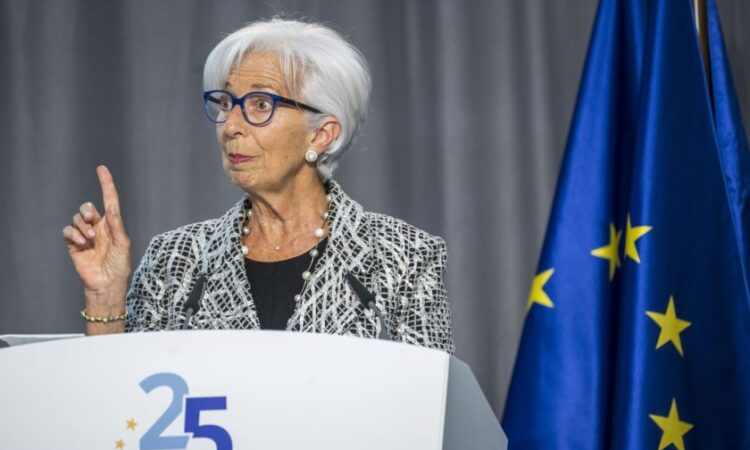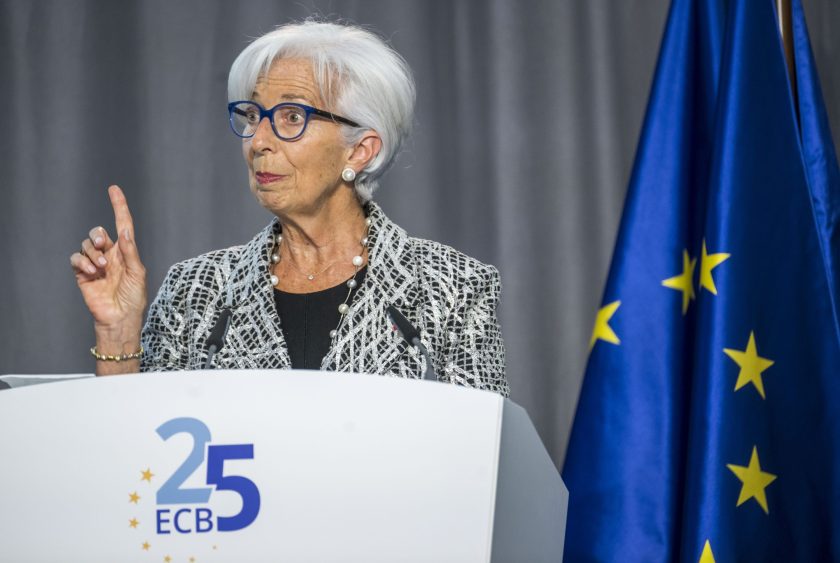

Christine Lagarde, president of the European Central Bank, on May 24, 2023, in Frankfurt. Thomas Lohnes—Getty Images
America is headed for a recession, have you heard? For at least a year now, predictions of economic doom and gloom have been fashionable on Wall Street as reliable market indicators like the yield curve began flashing deep red. By some measures, the recession of the first Joe Biden term became the most widely predicted downturn in history. Yet while the United States continues to confound experts with robust growth in the face of high inflation and rising borrowing costs, it looks as if Europe hasn’t been so lucky.
Technically, the 20 nations sharing the continent’s single currency just slid collectively into a winter recession, albeit a shallow one, defying previous hopes they could mimic the solid if unspectacular first-quarter performance on the other side of the Atlantic.
Official data published on Thursday showed economic output contracted for two straight periods at a quarterly rate of 0.1%, as higher business investment in new equipment failed to offset a decline in consumer spending and government austerity. This is called a “technical recession,” although “official” declarations of recession are more complex, and essentially involve a group of economists in one room declaring it so.
The German Canary and the beleaguered Celtic Tiger
Earlier predictions had the eurozone escaping even a mild recession, but the data comes as less of a surprise after Europe’s largest economy, Germany, already met the textbook definition of recession itself. Revisions to earlier estimates revealed output already began sagging in the fourth quarter as consumers struggled to cope with skyrocketing energy prices following Vladimir Putin’s invasion of Ukraine.
But other countries have also struggled—even those with far fewer trade ties to the two warring parties. The Irish Republic posted notably the weakest growth of all 20 eurozone countries, showing a 4.6% quarterly drop, a severe contraction.
“Ireland alone reduced euro area Q1 growth by 0.2%, which would have avoided recession without this drag,” said Frederik Ducrozet, head of macroeconomic research at Pictet Wealth Management.
Experts argue the Celtic Tiger’s performance actually masks solid underlying growth and is largely the result of fluctuations caused by a small but influential number of U.S. tech giants and global pharma companies that use Ireland as a tax haven.
Modified domestic demand, which strips out factors like investment in imported intellectual property, showed Ireland expanded at a rate closer to 2.7% in the first quarter, the Financial Times reported last week.
Ducrozet argued that the euro area as a whole “remains resilient thanks to [the] strong services and labor market.” Unemployment throughout the eurozone stayed flat at 6.5% in April, its lowest level since records began.
By comparison, the U.S. has defied repeated predictions that activity would shift into reverse on the back of steep interest rate hikes by the Federal Reserve meant to cool down an overheating economy. Gross domestic product increased by 1.3% in the first quarter, though this is notably an annualized figure.
President Joe Biden’s gonzo fiscal stimulus packages, the $1.2 trillion Bipartisan Infrastructure Law and the erroneously named Inflation Reduction Act that weighs in at $738 billion, are already starting to fuel business investment and spending on big-ticket items like electric vehicles.
Private consumption has been advancing at a brisk clip, but there are increasing signs of fatigue, especially among Americans with lower disposable income.
Even more affluent consumers feeling flush amid rising stock prices should be on alert. Market strategists are warning a second-half tsunami of Treasury bond issuance to replenish depleted government coffers could siphon investor cash, sparking heavy outflows out of equities and into bonds.






